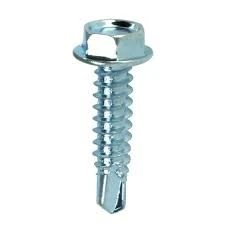what are chemical anchors
Understanding Chemical Anchors A Comprehensive Overview
Chemical anchors are essential components used in construction and engineering to provide secure fastening solutions for various applications. From securing fixtures to anchoring structural elements, they play a crucial role in ensuring the safety and stability of buildings and other infrastructures. In this article, we will delve into what chemical anchors are, their types, applications, installation processes, and the advantages they offer.
What are Chemical Anchors?
Chemical anchors are adhesive-based fastening systems that use a combination of a resin and a hardener to create a strong bond between the anchor and the substrate material, typically concrete or masonry. Unlike mechanical anchors that rely on physical expansion to secure themselves, chemical anchors adhere through a chemical reaction, making them incredibly reliable and effective for a wide range of applications.
Types of Chemical Anchors
There are several types of chemical anchors, each designed for specific use cases, environments, and load requirements. The most common types include
1. Epoxy Anchors These are among the strongest chemical anchors available, offering excellent bond strength and resistance to environmental factors. Epoxy anchors are suitable for heavy loads and harsh conditions, making them ideal for structural applications.
2. Polyester Anchors These anchors are often used in less demanding conditions. They provide good bond strength and are typically more cost-effective than epoxy anchors. Polyester is a suitable choice for interior applications or moderate load requirements.
3. Vinylester Anchors Combining properties of both epoxy and polyester, vinylester anchors offer high chemical resistance along with strong adhesion. They are often employed in applications that involve exposure to chemicals and moisture.
4. Hybrid Resins These are newer formulations that combine the advantages of different resins to provide enhanced performance characteristics. They can be tailored for specific applications, ensuring versatility and reliability.
Applications of Chemical Anchors
Chemical anchors are widely used in various sectors, including
- Construction They are used to secure structural elements, such as beams and columns, to concrete slabs. They are also used for attaching fixtures, like handrails or equipment, to walls and floors.
- Masonry Support In masonry construction, chemical anchors provide strong connections between bricks or blocks and additional structures, ensuring enhanced stability.
- Infrastructure Projects Chemical anchors are integral in roads, bridges, and tunnels, where high load capacities and durability against environmental factors are paramount
.what are chemical anchors

- Industrial Applications They are frequently employed in factories and warehouses for mounting heavy machinery, shelving, and storage systems.
Installation Process
The installation of chemical anchors is a relatively straightforward process, though it requires attention to detail to ensure effectiveness. Here is a general overview of the steps involved
1. Preparation of the Substrate The surface must be clean, dry, and free from debris. Any dust, oil, or loose material should be removed to achieve maximum adhesion.
2. Drilling A hole is drilled into the substrate with a specific diameter and depth, as recommended by the manufacturer’s guidelines. This is critical for the anchor to perform optimally.
3. Cleaning the Hole After drilling, the hole must be cleaned again to remove any generated dust or debris using air blowers or brushes.
4. Injecting the Resin The anchor resin is injected into the hole, ensuring that it is evenly distributed.
5. Placing the Anchor The anchor is then inserted into the hole, allowing it to come into contact with the resin. The anchor should be twisted slightly to ensure full encapsulation.
6. Curing Finally, the chemical reaction begins, and the resin cures over a specified period, developing the required strength. It is essential to allow adequate curing time before applying any loads to the anchor.
Advantages of Chemical Anchors
Chemical anchors offer numerous advantages, including
- High Load Capacity They can bear substantial loads, making them suitable for demanding applications. - Versatility They can be used in a variety of base materials, including concrete, brick, and stone. - Resistance to Environmental Conditions Many chemical anchors are resistant to moisture, chemicals, and temperature fluctuations, enhancing longevity. - Reduced Spalling They minimize the risk of spalling often associated with mechanical anchors, protecting the integrity of the substrate.
Conclusion
Chemical anchors are integral to modern construction and engineering, providing reliable fastening solutions for a diverse range of applications. Their durability, strength, and versatility make them a preferred choice for professionals in the industry. Understanding the different types, installation processes, and advantages of chemical anchors can help ensure safer and more efficient projects, paving the way for structures that meet the demands of both functionality and safety.
-
Weatherproof Plastic Expansion Anchors for OutdoorNewsJun.06,2025
-
Sustainability in the Supply Chain: Eco-Friendly TEK Screws ProductionNewsJun.06,2025
-
Load-Bearing Capacity of External Insulation FixingsNewsJun.06,2025
-
Double Head Bolts: Enhancing Efficiency in Industrial MachineryNewsJun.06,2025
-
Corrosion Resistance in Chipboard Screws: Coatings for Wholesale DurabilityNewsJun.06,2025
-
Butterfly Toggle Bolts : Enhancing Structural ResilienceNewsJun.06,2025
